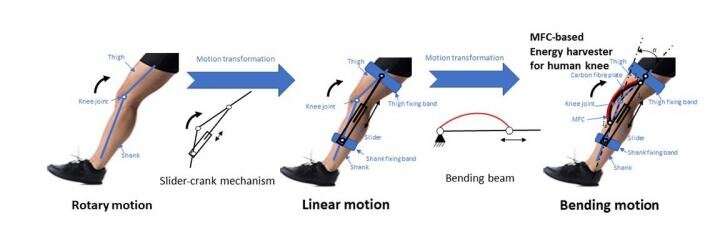Imagine powering your devices simply by moving around, thanks to a system that generates energy from walking.
A technology developed by a group of researchers at the Chinese University of Hong Kong could bring that moment closer.
The team described the technology in a paper published in the journal Applied Physics Letters. A power generator attached to the leg can generate 1.6 microwatts of energy without any increase in effort.
It is enough to power small vital signs or GPS monitoring devices.

“A walk-powered GPS can make a difference to the survival of climbers and mountaineers,” says the study author Wei-Hsin Liao, professor in the engineering department of the University of Hong Kong.
The system
The researchers used a special microfibre material capable of obtaining energy from its extension: the leg is the limb with the greatest range of movement, which is why the choice naturally fell on its use.
Each time the leg flexes, the device tends to generate electricity by capturing biomechanical energy from natural movement.
“The frequency of human walking is not high, and therefore different methods based on harvesting energy from vibrations do not work properly,” says Liao.
The prototype weighs only 307 grams and has been tested on walks of variable speed from 2 to 6,5km per hour. The effort required for walking is the same: the system generates energy without additional effort for the wearer.
Future uses
The team will investigate future commercial uses for this energy technology.
I see no limits to their use: systems of this type eliminate the need to recharge a significant number of devices every day.
I see a commercial development nearby. Reformulation: only a few steps left.
Here is the study: Fei Gao et al, Macro fiber composite-based energy harvester for human knee, Applied Physics Letters (2019). DOI: 10.1063 / 1.5098962

